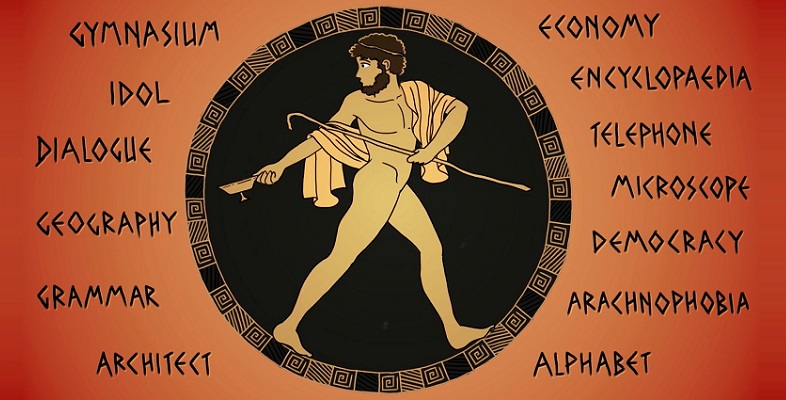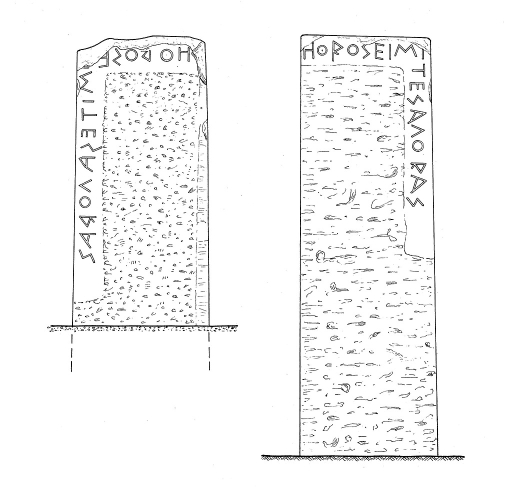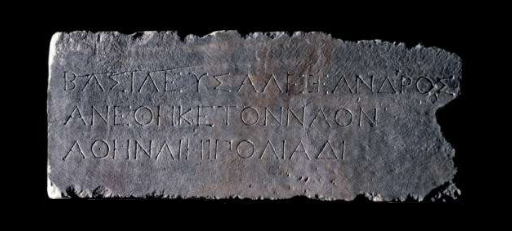7 The standardisation of the alphabet
The version of the Greek alphabet in use today is the East Ionic, which possesses, among other features, the letters eta and omega that other versions lacked. It could therefore offer, in some respects, a more exact representation of spoken Greek.
Ionia refers to an area on the west coast of Turkey, with strong links to Athens. The adoption of the Ionic alphabet by the Athenians for official documents in 403/2 BCE was a decisive step towards a standard alphabet for all Greeks. We know the date of this change because it is recorded as having taken place in the archonship of Euclides. (The archonship was an annual office at Athens which ran from one summer to the next, in the case of Euclides from mid-403 to mid-402. This is why dates in Greek history sometimes straddle two years.) The change seems to have been part of a wider reorganisation of Athenian public life following defeat in the Peloponnesian War and a bloody, short-lived experiment with oligarchic rule under a group known as ‘The Thirty Tyrants’.
The conquests of Alexander (d. 323 BCE) consolidated and spread the use of the Ionic alphabet, reaching areas previously little influenced by Greek culture. It was this world that the Romans encountered when Roman and Greek history became entangled from the third century BCE onwards. The spread of the alphabet can be seen in the maps from the course introduction [Tip: hold Ctrl and click a link to open it in a new tab. (Hide tip)] .
Some of the differences between the Ionic and Athenian alphabets can be illustrated by the boundary stones.
Activity 8 Reading the boundary stones
Look for the letter gamma on the boundary stone, using the text below as a guide:
ὅρος εἰμὶ τῆς ἀγορᾶς
I am a boundary of the agora
How does the shape of gamma on the stone differ from the standard form?
Discussion
Gamma (Γ) on the boundary stone looks like capital lambda (Λ). This would not have been as confusing as it sounds, because Athenian lambda looked more like the English letter ‘L’. You might recall examples on the Themistocles ostraka from Session 6.
On the right-hand boundary stone, how many of the following features of the Athenian alphabet and letter forms can you detect?
- the use of a symbol ‘H’ to represent an ‘h’ sound
- the use of epsilon to represent both short and long ‘e’
- sigma written with 3 lines instead of 4.
Discussion
- The symbol H begins the inscription in the word ὅρος. In lower case, this sound is now represented by a rough breathing.
- The use of E for both epsilon and eta can be found in the words εἰμί and τῆς.
- There are three instances of the so-called ‘three-bar’ sigma, in the words ὅρος, τῆς and ἀγορᾶς.
You might also have noticed a small extra stroke on the letter rho, which makes it resemble an English ‘R’.
Finally, look again at the inscription from Priene, from the latter part of the fourth century when the Ionic alphabet had become standard.
Find an example of eta and epsilon. Use the text below as a guide:
βασιλεὺς Ἀλέξανδρος ἀνέθηκε τὸν ναόν
Discussion
Unlike the boundary stones, the inscription from Priene uses separate letters for short and long ‘e’, namely epsilon and eta. There are examples of each in the word ἀνέθηκε. Other standard features include:
- a standard-shaped lambda
- the letter ‘xi’ (the Athenian alphabet used chi followed by sigma)
- a sigma with four strokes instead of three.


